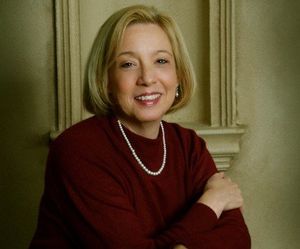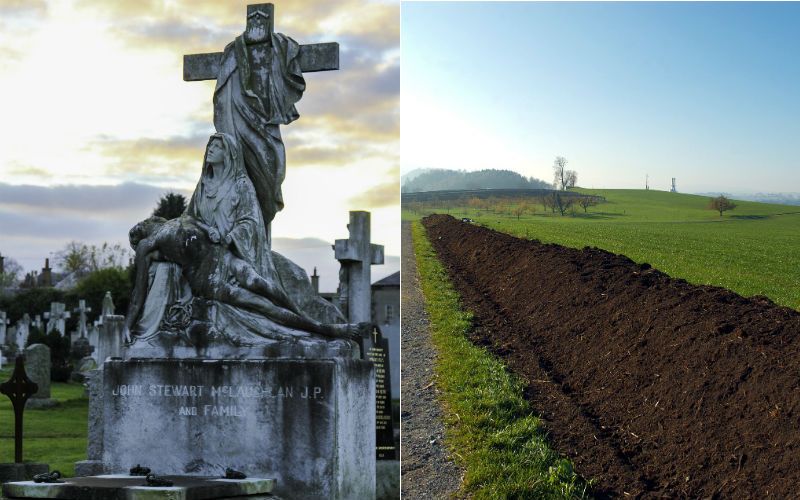How “Death Positive” Are You?
A lot of folks are celebrating the passage of a new law in Washington State that will now give citizens three choices for what to do with the bodies of their beloved dead: bury, cremate, or have them made into a couple of wheel-barrels of human compost.
Welcome to the eco-friendly Death Positive Movement!
For those who never heard of it, the death positive movement – aka death positivity – is a movement calling for a more open discussion about death, dying, and end-of-life wishes. It even goes so far as to endorse “Death Cafes” where people gather to discuss death and mourning.
A group of funeral industry professionals at the forefront of this movement have united themselves into what they call The Order of the Good Death. Their aim “explores ways to prepare a death phobic culture for their inevitable mortality.”
Mortician Caitlin Doughty founded the movement in 2011, claiming is “about making death a part of your life.”
“This means committing to staring down your death fears, whether it be your own death, the death of those you love, the pain of dying, the afterlife (or lack thereof), grief, corpses, bodily decomposition, or all of the above.
Accepting that death itself is natural, but the death anxiety and terror of modern culture are not.”
While it all sounds acceptable, Doughty makes some comments in this 2016 TED talk about proposed burial practices that Christians may find somewhat disturbing.
For example, Doughty spoke about visiting a human decomposition facility at Western Carolina University.
At this facility, bodies are donated to science for the purpose of studying their decay in order to benefit the future of forensics. There were 12 bodies on the site during her visit, all in various stages of decomposition.
However, she wasn’t there for forensic reasons. She was there on behalf of a colleague named Katrina Spade.
Spade considers herself an Eco-Death Revolutionary who wants to create a system to compost the dead. Spade calls it recomposition, and it’s much like what we’ve done with cattle and other livestock for years.
The idea allows families to lay their loved one in a nutrient rich mixture that would, in four to six weeks, reduce the body – bones and all – to soil.
Spade, who was very much behind the passage of the Washington state bill, making it the first state in the United States to legalize this practice, praises its many benefits.
With everyone buried in dedicated green spaces without headstones or markers, it will help towns maintain the ability to reintroduce native plants and animals to a region and preserve places for public trails and spiritual practices.
Being eco-friendly is one thing, but should that extend to treating our bodies, which are sacred temples of the Holy Spirit, like fertilizer to beautify hiking trails and city parks?
The Church certainly doesn’t think so.
In 2016, the Vatican issued an “Instruction Ad resurgendum cum Christo regarding the burial of the deceased and the conservation of the ashes in the case of cremation,” which makes it quite clear that the body deserves respectful treatment, even after death.
“By burying the bodies of the faithful, the Church confirms her faith in the resurrection of the body, and intends to show the great dignity of the human body as an integral part of the human person whose body forms part of their identity.
“She cannot, therefore, condone attitudes or permit rites that involve erroneous ideas about death, such as considering death as the definitive annihilation of the person, or the moment of fusion with Mother Nature or the universe, or as a stage in the cycle of regeneration, or as the definitive liberation from the ‘prison’ of the body.”
At a press conference preceding the Instruction’s release, Cardinal Gerhard Muller explained the vast difference between allowing natural bodily decay while protecting the environment, and seeing deceased bodies reduced to mere fertilizer for plants and trees.
He also clarified why a person should not be buried in an unmarked grave.
“ . . . [W]hen a person is buried in the ground — and, at least to some extent — when the urn of the person’s ashes are placed in a columbarium or tomb, the final resting place is marked with the person’s name, the same name with which the person was baptized and by which the person is called by God.”
He added, “Belief in the resurrection of the flesh is fundamental. A human cadaver is not trash.”
The bottom line is that Catholics are already “death positive” but for a whole different reason.
“Because of Christ, Christian death has a positive meaning . . . By death, the soul is separated from the body, but in the resurrection, God will give incorruptible life to our body, transformed by reunion with our soul.
“In our own day also, the Church is called to proclaim her faith in the resurrection: ‘The confidence of Christians is the resurrection of the dead; believing this we live’.”
[See also: The Psychic’s Secret: Is Demonic Activity Involved in Their Mysterious Abilities?]
[See also: Pro-Choicer Concedes After Challenging Pro-Lifers’ Support of Struggling Moms – Read Her Surprising Post!]


